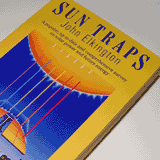
Sun Traps

Science and Technology
1985
The Gene Factory: Inside the Biotechnology Business
John Elkington, Century Publishing, London, hardback.
As Editor of Biotechnology Bulletin (1983-1998), John visited scores of universities and research institutes, and over 100 companies, building up a detailed picture of what the future holds for the biotechnology business. The book explored the underlying sciences and technologies, before focusing in on some of the applications (eight core chapters looked at the prospects for new cures, new crops, new breeds, new menus, new fuels, new production lines, new services and new horizons) and some of the ethical, social and environmental implications.
1985
The Poisoned Womb: Human Reproduction in a Polluted
World
John Elkington, Viking/Penguin Books, hardback 1985, paperback 1986.
An account of the current state of reproductive toxicology. Parts of the book made for grim reading: mercury-contaminated fish in Japan's Minamata Bay; dioxin fall-out in Seveso, Italy, and in Times Beach, Missouri; massive DDT contamination of the residents of Triana, Alabama; extensive foetal deaths following the overuse of herbicides in Brazil; and many similar, less publicised cases. Whether we live in Siberia, South Korea, Swaziland or Sweden, the book concluded, "we all live on the toxic frontier. When Rachel Carson published her extraordinarily influential book Silent Spring in 1962, she was concerned about reproductive failures in birds and animals. Today the most worrying threats involve our sperm, eggs, our embryos, our children."
1984
Sun Traps: The Renewable Energy Forecast
John Elkington, Pelican Books, London, paperback.
The sun radiates more energy into space than 200,000 million million of our largest existing commercial nuclear reactors. Much of this energy is lost, but still an astonishing amount breaks through to our small planet. This books asks the question: How can we put a growing proportion of this renewable energy to work? It explores the worlds of fossil fuels, nuclear fission and fusion, and geothermal energy. And it explains recent developments in renewable energy capture systems, such as solar architecture, photovoltaic cells, and animal, wind and wave power. Some of the research was done while John was Editor of The ENDS Report (1978-1983) and some while on a Churchill Fellowship (1981).